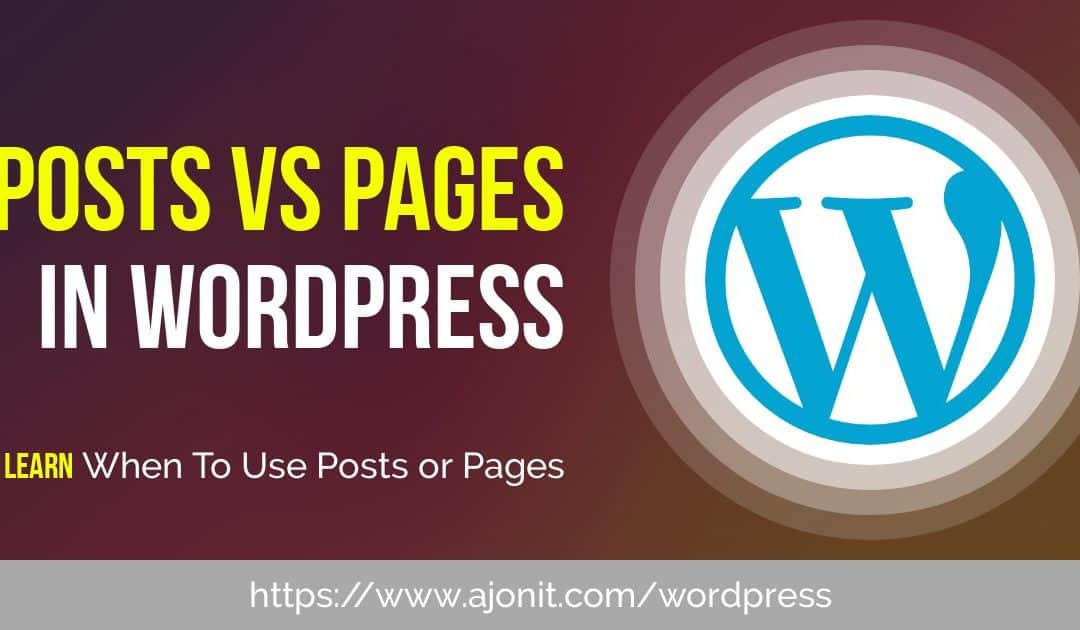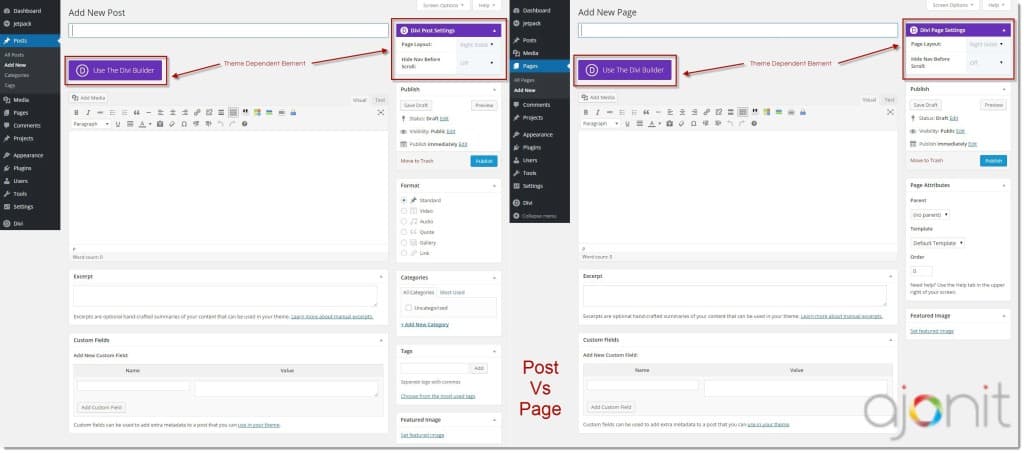In the last few tutorials we discussed WordPress dashboard where you may have noticed two similar section. Posts and Pages. In this tutorial, we will discuss in detail Posts vs Pages and find out where to use which one when creating a new web page.
Posts and Pages have almost similar fields and looks same on the website. Every beginner to WordPress had this question at one point of time.
When should I use posts and when should I use pages in WordPress? Is there a criterion to choose one?
Posts
Posts are generally used for news or information updates or blogging articles. Anything you wish to publish on a regular basis should be listed as posts. Normally, these are listed in reverse chronological order (latest on top) on your blog’s homepage. If you are going to use WordPress as a blog, then majority of your site’s content will be in the form of posts. Due to its reverse chronological nature your posts should be timely and regular basis, so that user can easily know that blog is updated regularly and relevant information posted on the blog.
WordPress posts get syndicated via RSS feeds. This helps you enable your users to get easy notification via RSS feed of your latest blog posts.
Pages
Pages are meant to be static and something that’s needed to be linked from across the site. Some good examples of Pages are About page, Contact page, Privacy page or Terms and Conditions page. Pages are timeless entities. For example, your About page or Contact page is not going to expire or you don’t want to list them in the reverse chronological order as posts just to show them to user as these are irrelevant at that place and user know where to look for if they want to know about blog/website or want to contact you.
Generally these static pages are located at top navigation menu or at the footer navigation. You can easily make any changes to these pages in future but these are generally on long term basis. As these are not published based on time and date so those pages will not included by default in your RSS feeds and users don’t get a notification when you create new pages in WordPress.
Conclusion: Posts vs Pages
In short, posts are articles made on regular basis, can be used for social sharing and comment purposes, listed in RSS feed, listed on homepage in reverse chronological order by default, can be categorized and tagged while pages are meant to be static, generally for one-time information update, not listed on homepage by default, do not get listed in RSS feed, not meant to be shared or commented upon.


